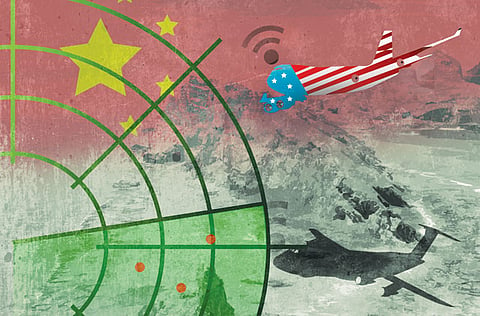China’s air zone announcement raises Asian diplomatic temperature
China’s image will benefit from enhanced public diplomacy to win foreign hearts

US Vice-President Joe Biden concluded his Asia tour in South Korea yesterday following earlier meetings in Japan and China. Biden’s trip coincided with a moment of significant regional tension following China’s declaration last week of a new “air defence identification zone”.
Last Tuesday, in Japan, Biden said the US administration was “deeply concerned” by the move, which he asserted had “increased the risk of [air] accidents and miscalculation”. The zone encompasses islands, known as Senkaku in Japan and Diaoyu in China, which both countries claim as their own. The dispute over the islands dates back at least three decades, but has become more heated since Japan decided to nationalise them last year.
Since the declaration of the zone, Beijing has insisted that all flights, civilian and military alike, must submit flight plans before entering the zone. The European Union and the US have urged caution to calm regional tensions and this has been a theme which Biden emphasised last week. In response to China’s declaration, the Barack Obama administration has recommended that US commercial aircraft report their flight plans into Beijing, although US military aircraft continue to operate without notification. Meanwhile, Japan (which also continues to operate flights in the zone) announced on November 30 that it has asked the United Nations organisation that oversees civil aviation to examine whether the zone could undermine aviation safety.
Tokyo’s ambition here is to bring enhanced international scrutiny to this issue in a bid to undercut Beijing. While air zones of this nature are commonplace across the world, there is concern that China has both imposed this measure unilaterally and warned that it will take unspecified “emergency defensive measures” if aircraft do not comply with submitting flight plans (already, it has frayed some nerves by sending fighter jets to investigate US and Japanese aircraft in the zone).
Whatever Beijing’s motives in declaring the zone, it will add to the growing international tide of suspicion and sometimes even outright hostility as China increasingly asserts its growing power. The central challenge the country faces here is that its soft power — its ability to win the hearts and minds of other nations and influence their governments through attraction rather than coercion or payment — has lagged far behind its hard power, built on its growing economic and military might.
In Japan, for instance, public favourability towards China fell from 34 per cent to 15 per cent between 2012 and 2011, according to Pew Global, largely in response to China’s new international assertiveness. Meanwhile, in the US, public favourability towards China fell to 40 per cent in 2012, from 51 per cent in 2011. Issues such as Beijing’s alleged currency manipulation, the large size of US trade deficit with China and the large US financial debt held by Beijing, not to mention alleged Chinese cybersecurity attacks on US interests, have taken their toll on US public opinion.
With distrust of China growing, many countries in Asia-Pacific are actively strengthening their diplomatic alliances, particularly with Washington, in a bid to balance Beijing’s growing economic and military strength. This is a political headache the new Chinese leadership could do without and it must now think hard about how to enhance the country’s image in the world.
Most immediately, Beijing must restart a process of addressing concerns of foreign governments about its intentions. Here, it needs to intensify efforts to be seen as a responsible, peaceful power. And match this rhetoric with actions.
President Xi Jinping made a good start towards this goal in his landmark summit with President Barack Obama last summer. He pledged to form a “new model of cooperation” and that “China and the United States must find a new path ... one that is different from the inevitable confrontation and conflict between the major countries of the past”.
As the Pew Global data indicates, China’s international image will also benefit from enhanced public diplomacy to win more foreign ‘hearts and minds’. At a symbolic level, measures may include utilising the country’s growing capabilities in space travel for high-profile international cooperation projects. Surveys underline that many around the world admire China’s strength in science and technology.
A related problem to be tackled is that international communications of Chinese state institutions often lack legitimacy and credibility with foreigners. One solution may be to expand the number of non-state groups — including those from civil society networks, diaspora communities, student and academic groups and business networks — involved in the country’s diplomatic outreach.
For many foreign publics, there also needs to be stronger Chinese commitment to domestic political change, transparency and concrete steps towards democratisation. Many in the international community are likely to remain wary of the country while it clamps down on its own citizens seeking domestic reform, including human rights activists.
Taken overall, the challenges ahead for China are deep-seated and will require sustained investment and significant reform. However, unless they are tackled, the country’s image will increasingly disable, rather than enable, its ambitions as a rising superpower.
Andrew Hammond was formerly a geopolitical analyst at Oxford Analytica. He was also a special adviser in the UK Government of Tony Blair.
Sign up for the Daily Briefing
Get the latest news and updates straight to your inbox



